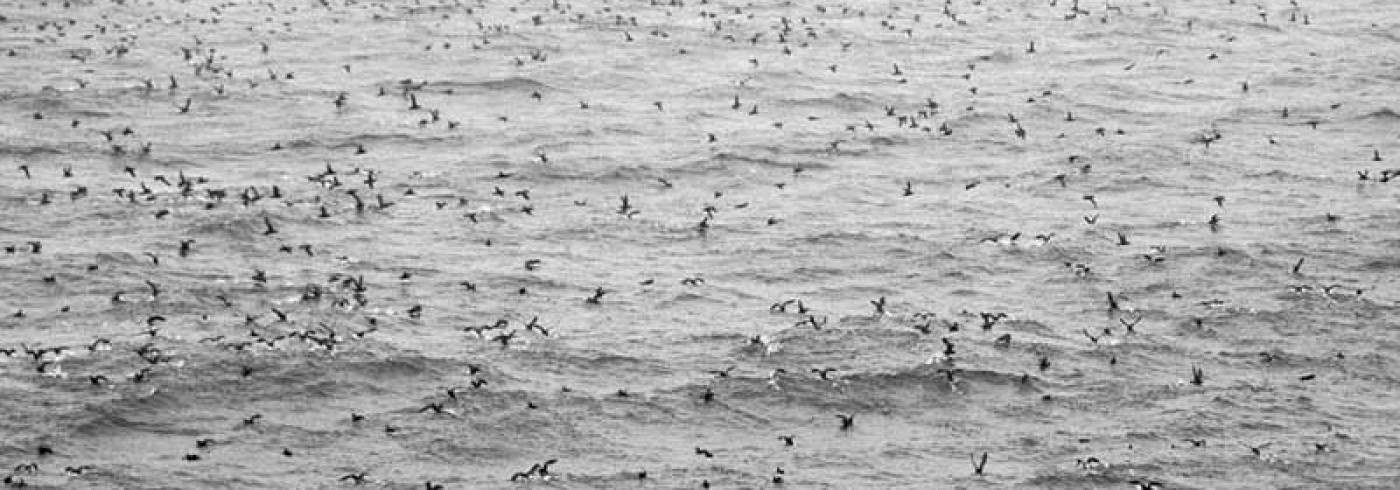Effects of global warming on the reproductive biology of birds in Swedish sub-arctic areas
1 June 2007 - 31 July 2007Background
Birds are excellent indicators of environmental change, such as biologically important effects of climate change, and consequently studies of birds can be used to predict the development over large areas. This project there-fore aims to study effects of climate change on the reproductive biology of birds in Padjelanta, the most species-rich area of the World Heritage Site Laponia in northern Sweden. In Padjelanta, climatic factors limit the distribution and breeding performance of many bird species, which makes it easier to quantify the effects of global warming on reproduction, population dynamics and food supply and predation.
Between 1971 and 1995, a number of studies have been made of Fieldfares (Turdus pilaris), Merlins (Falco columbarius), Hooded Crows (Corvus corone) and the bird communities in the birch forest and on the tundra. As the current project focuses on the effects of global warming on the reproductive biology of some of the species included in the previous study period, the present study thus comprises a period of some 35 years, a period that is adequately long to measure climatic effects in biological systems. In 2007, the field studies were mainly directed towards the collection of data on the breeding phenology of Merlins and Hooded Crows and the occurrence of new species in the study area.
The fieldwork
Field studies were carried out throughout June and early July 2007, in the surroundings of Staloluokta, Padjelanta National Park, Laponia, Sweden. During this year, it was unusually hot and dry in the study area. The area was searched for nesting Merlins and Hooded Crows and the reproductive performance of Merlins was studied by recording clutch size, number of eggs hatched and nestling survival until the chicks were at least 10 days old. Earlier studies have indicated that chicks normally survive to fledging age: among several hundred nests controlled during the period 1971 to 1995, there is only one record indicating that chicks at this stage of development or older succumbed. Body mass and the length of a primary were determined for each chick on at least one occasion making it possible to determine when the eggs had hatched by using previous and detailed studies of chick growth. To estimate reproductive performance by the Hooded Crow a sample of the breeding population of Hooded Crows can be used.
To estimate the exact location of nest sites of both Merlins and Hooded Crows a Global Positioning System (GPS) was used. The GPS coordinates will be used to determine the densities of breeding Merlins and breeding Hooded Crows in the study area. Furthermore, the GPS coordinates will be used to calculate the distance between the nest of a breeding Merlin pair and the nearest breeding pair of Hooded Crows. The Hooded Crows are the most important predators on birds’ eggs and chicks, including breeding Merlins, in this area. In addition, the nests used by Merlins for breeding are actually nests built by Hooded Crows and previous studies have showed that Merlins prefer to use a nest of good quality for breeding, i.e. one-year-old crow nests.
Results
In the study area, 8 pairs of Merlins and 13 pairs of Hooded Crows were breeding. Two Merlin pairs failed to produce chicks due to predation before the eggs hatched. All Hooded Crow pairs produced fledglings, numbering between one and four chicks per pair.
An analysis of the start of the breeding among Merlins has been made using data from the first study period alone, which shows a trend of clutch initiation starting successively earlier during the 1980s and 1990s. In comparison with data from 2007 it appears that this trend remains and may even be slightly more pronounced. However, there was a large variation in the breeding start among the Merlin pairs in 2007 and therefore, a more careful analysis of the start of laying in different territories is required before reliable conclusions can be made on how much earlier Merlins start to breed in the early part of this century in comparison with the 1970s.

